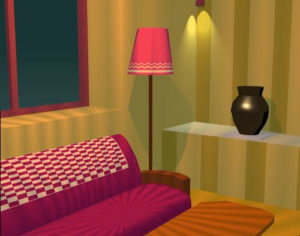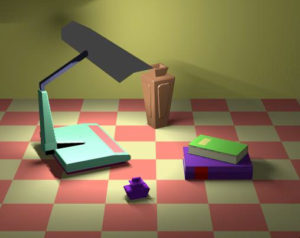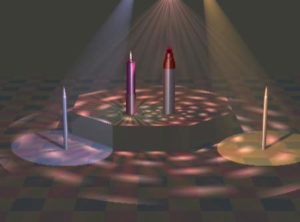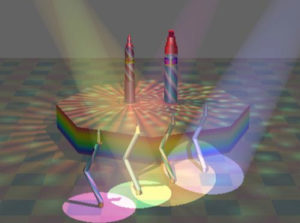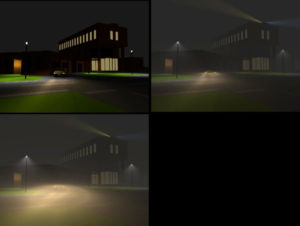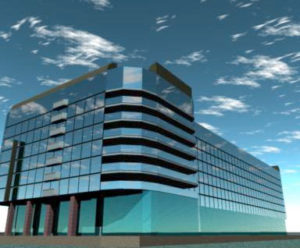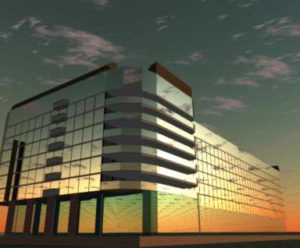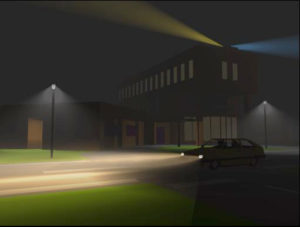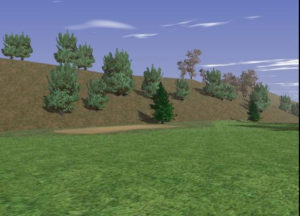Chapter 5: University research labs evolve
5.5 Other labs and NSF Technology Center

There are quite a number of other universities that also contributed to the advancement of the discipline at this point. For example, these three programs were major contributors to the discipline.
Hiroshima University
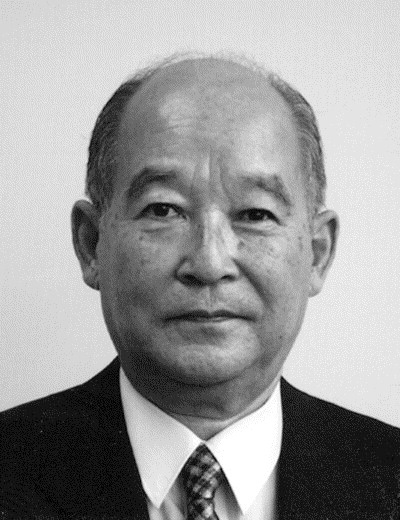
Eichachiro Nakamae and his group at the EML at Hiroshima University in Japan conducted research on lighting and atmospheric scattering of light. Eichachiro Nakamae later became chairman of Sanei Co. and an honorary professor of Hiroshima University. He was appointed as a researcher associate at Hiroshima University in 1956, a professor from 1968 to 1992 and an associate researcher at Clarkson College of Technology, Potsdam, NY, from 1973 to 1974.
Carnegie Mellon University
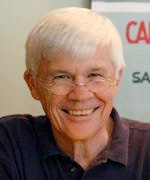
The appointment of Charles Eastman in 1968 to the faculty of what were then the Departments of Architecture and Computer Science at Carnegie Mellon University initiated a series of research projects that were seminal to the field of computer-aided architectural design. Eastman, at the Institute for Physical Planning at Carnegie Mellon, developing the GLIDE system with Max Henrion and the General Space Planner (GSP) System, a software system for solving space planning problems. Eastman and Kevin Weiler also published a seminal paper on the use of Euler operators for geometric modeling. Subsequent research activities concentrated on a general modeling scheme for buildings. Chris Yessios, developer of Form•Z at Ohio State, received his doctorate from this program.
Brown University
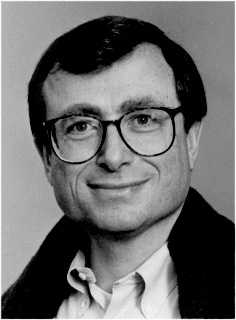
Andy Van Dam created the program at Brown University, and has over 3 decades of contributions in the area of graphical user interfaces (more information on Brown can be found in the section on GUIs in Chapter 16).
NSF Center
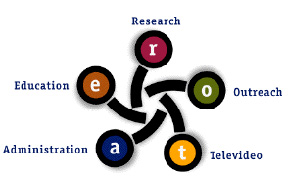 In 1991, The National Science Foundation funded the NSF Science and Technology Center for Computer Graphics and Scientific Visualization, as a consortium of five of these important universities (Cornell, Brown University, the University of North Carolina at Chapel Hill, the University of Utah, and Cal Tech).The original mission of the NSF Center, to rebuild the foundations of computer graphics, became even more important in the years after the Center was established. In addition, the center served as an experimental collaboration environment among the five universities, linked by full-time video, audio and data connections used for teaching, administration, and research. Close ties among the members influenced the research and broadened the exposure the graduate and undergraduate students at each facility, and in fact at all other academic research facilities received.
In 1991, The National Science Foundation funded the NSF Science and Technology Center for Computer Graphics and Scientific Visualization, as a consortium of five of these important universities (Cornell, Brown University, the University of North Carolina at Chapel Hill, the University of Utah, and Cal Tech).The original mission of the NSF Center, to rebuild the foundations of computer graphics, became even more important in the years after the Center was established. In addition, the center served as an experimental collaboration environment among the five universities, linked by full-time video, audio and data connections used for teaching, administration, and research. Close ties among the members influenced the research and broadened the exposure the graduate and undergraduate students at each facility, and in fact at all other academic research facilities received.
Gallery 5.5 Hiroshima University
- Linear light source
- Light and shadows
- Frame from Feast of Light
- Frame from Feast of Light
- Scene from Visitor on a Foggy Night
- Daytime light reflections
- Evening sun reflection
- Scene from Visitor on a Foggy Night
- Trees on a golf course

